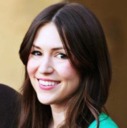-
Fan of Star Trek: The Motion Picture or just want to share your movie knowledge? This topic is dedicated to all trivia and questions related to Star Trek: The Motion Picture
Star Trek: The Motion Picture - Trivia, Questions and Fun Facts
-
As all the sound elements such as dubbed lines or background noise came together, they were classified into three divisions: A Effects, B Effects, and C Effects. A Effects were synthesized or acoustic sounds that were important and integral to the picture-the sound of V'Ger's weapon (partly done with the Blaster Beam instrument) for example, or Spock's mind meld, as well as transporters, explosions, and the warp speed sound effect. B Effects consisted of minor sounds such as the clicks of switches, beeps or chimes. C Effects were subliminal sounds that set moods-crowd chatter and ambient noise. All the elements were mixed as "predubs" to speed integration into the final sound mix.
Star Trek: The Motion Picture - Trivia, Questions and Fun Facts
-
Three types of uniforms were fabricated: dress uniforms used for special occasions, Class A uniforms for regular duty, and Class B uniforms as an alternative. The Class A designs were double-stitched in gabardine and featured gold braid designating rank. It was felt that the traditional four gold sleeve stripes for the Captain's rank was too blatantly militaristic. Jon Povill had to send out a memo to Robert Fletcher with the modified stripe rank system, as the designer continued to get the 20th and 23rd centuries confused. Fletcher designed the Class B uniform as similar to evolved t-shirts, with shoulder boards used to indicate rank and service divisions. Each costume had the shoes built into the pant leg, to further the futuristic look.
Star Trek: The Motion Picture - Trivia, Questions and Fun Facts
-
For the DVD release, the producers toyed with the idea of digitally inserting a shot of the NX-01 Enterprise (Jonathan Archer's ship from the prequel series Star Trek: Enterprise (2001)) into the rec-room scene where Decker shows Ilia a display of previous ships named Enterprise. The idea was eventually dropped, possibly since the shot would not be able to be seen clearly anyway (the pictures were not easily legible on-screen). The NX-01 would have replaced the shot of the 'ringed' S.S. Enterprise - which eventually appeared on "Enterprise" anyway (in the bar scene in Star Trek: Enterprise: First Flight (2003)). Included among the Enterprises originally depicted is the space shuttle pro-type (OV-101) which was paradoxically named after the Star Trek: The Original Series (1966) starship Enterprise.
Star Trek: The Motion Picture - Trivia, Questions and Fun Facts
-
The film takes place four years after Star Trek: The Original Series: Turnabout Intruder (1969), the final episode of the original series. The film was released a decade after the original series ended.
Star Trek: The Motion Picture - Trivia, Questions and Fun Facts
-
Special Effects Supervisor Alex Weldon was planning on retiring after 42 years of effects work, but his wife urged him to take on the job because she thought he did not have enough to do. When Weldon was hired, many of the effects had already been started or completed by Rugg; it was up to Weldon to complete more complex and higher-budgeted effects for the motion picture. The first step of preparation involved analysing the script in the number, duration, and type of effects. Before costs could be determined and Weldon could shop for necessary items, he and the other members of the special effects team worked out all possibilities for pulling off the effects in a convincing manner.
Star Trek: The Motion Picture - Trivia, Questions and Fun Facts
-
It was understood in the script, but not stated in the film, that Commander Willard Decker was the son of Commodore Matthew Decker from Star Trek: The Original Series: The Doomsday Machine (1967).
Star Trek: The Motion Picture - Trivia, Questions and Fun Facts
-
For the science station, two consoles were rigged for hydraulic operation so that they could be rolled into the walls when not in use, but the system was disconnected when the crew discovered it would be easier to move them by hand.
Star Trek: The Motion Picture - Trivia, Questions and Fun Facts
-
One of the extras during the briefing scene is Bjo Trimble, the woman who spearheaded the letter-writing campaign for the original series. She is standing in the front row.
Star Trek: The Motion Picture - Trivia, Questions and Fun Facts
-
Paramount Home Video VHS packages incorrectly listed this film as having been released in 1980, rather than in December of 1979.
Star Trek: The Motion Picture - Trivia, Questions and Fun Facts
-
An Italian shoemaker decorated by the Italian government for making Gucci shoes was tasked with creating the futuristic footwear. Combining the shoes and trousers was difficult, time-consuming, and expensive, as each shoe had to be sewn by hand after being fitted to each principal actor. There were difficulties in communication, as the shoemaker spoke limited English and occasionally confused shoe orders due to similar-sounding names.
Star Trek: The Motion Picture - Trivia, Questions and Fun Facts
-
The rush to finish the rest of the film impacted the score. The final recording session finished only five days before the film's release.
Star Trek: The Motion Picture - Trivia, Questions and Fun Facts
-
The film's soundtrack provided a debut for the Blaster Beam, an electronic instrument twelve to fifteen feet (3.7 to 4.6 meters) long. It was created by musician Craig Huxley, who played a small role in an episode of the original television series. The Blaster had steel wires connected to amplifiers fitted to the main piece of aluminum; the device was played with an artillery shell. Jerry Goldsmith heard it and immediately decided to use it for V'Ger's cues. Several state-of-the-art synthesizers were used as musical instruments, notably the Yamaha CS-80, ARP 2600, Oberheim OB-X, and Serge synthesizer.
Star Trek: The Motion Picture - Trivia, Questions and Fun Facts
-
Gene Roddenberry wanted Alan Dean Foster to write the final script for the film, but Harold Livingston thought him too inexperienced and tried to hire Steven Bochco, who was unavailable; Michael Cimino, who was not interested; and Bill Norton, who initially accepted but found it beyond his capabilities. In the end, Livingston did the job himself. He disagreed repeatedly with Roddenberry over re-writes and other matters, and quit and returned several times.
Star Trek: The Motion Picture - Trivia, Questions and Fun Facts
-
The Ilia-probe refers to humans as "carbon-based units". Although nearly all human biochemistry is carbon-based (proteins, lipids, DNA/RNA backbones), humans are mostly composed of water, not carbon. The carbon-based biochemistry could not happen if it weren't for the water composition.
Star Trek: The Motion Picture - Trivia, Questions and Fun Facts
-
Director Robert L. Collins, whose background was mostly in television, was hired to direct the two-hour premiere, but after the change to a movie, Paramount wanted a more experienced director, and replaced him with Robert Wise.
Star Trek: The Motion Picture - Trivia, Questions and Fun Facts
-
Various canisters and cargo containers appear to be suspended by Anti-gravity throughout the film. These effects were executed by several of Alex Weldon's assistants. The crew built a circular track that had the same shape as the corridor and suspended the antigravity prop on four small wires that connected to the track. The wires were treated with a special acid which oxidized the metal; the reaction tarnished the wires to a dull gray that would not show up in the deep blue corridor lighting. Cargo boxes were made out of light balsa wood so that fine wires could be used as support.
Star Trek: The Motion Picture - Trivia, Questions and Fun Facts
-
James Doohan's twin sons, Montgomery Doohan and Christopher Doohan, appear as extras in the movie.
Star Trek: The Motion Picture - Trivia, Questions and Fun Facts
-
Aside from control interfaces, the bridge set was populated with monitors looping animations. Each oval monitor was a rear-projection screen on which super 8 mm and 16 mm film sequences looped for each special effect. The production acquired 42 films for this purpose from an Arlington, Virginia-based company, Stowmar Enterprises. Stowmar's footage was exhausted only a few weeks into filming, and it became clear that new monitor films would be needed faster than an outside supplier could deliver them. Lee Cole, Michael Minor, and Rick Sternbach, worked together with Povill to devise faster ways of shooting new footage. Cole and Povill rented an oscilloscope for a day and filmed its distortions. Other loops came from Long Beach Hospital, the University of California at San Diego, and experimental computer labs in New Mexico. In all, over two hundred pieces of monitor footage were created and catalogued into a seven-page listing.
Star Trek: The Motion Picture - Trivia, Questions and Fun Facts
-
Stephen Collins, who plays Commander Willard Decker, was the star of the television series 7th Heaven (1996) together with Catherine Hicks, who plays Dr. Gillian Taylor in Star Trek IV: The Voyage Home (1986).
Star Trek: The Motion Picture - Trivia, Questions and Fun Facts






